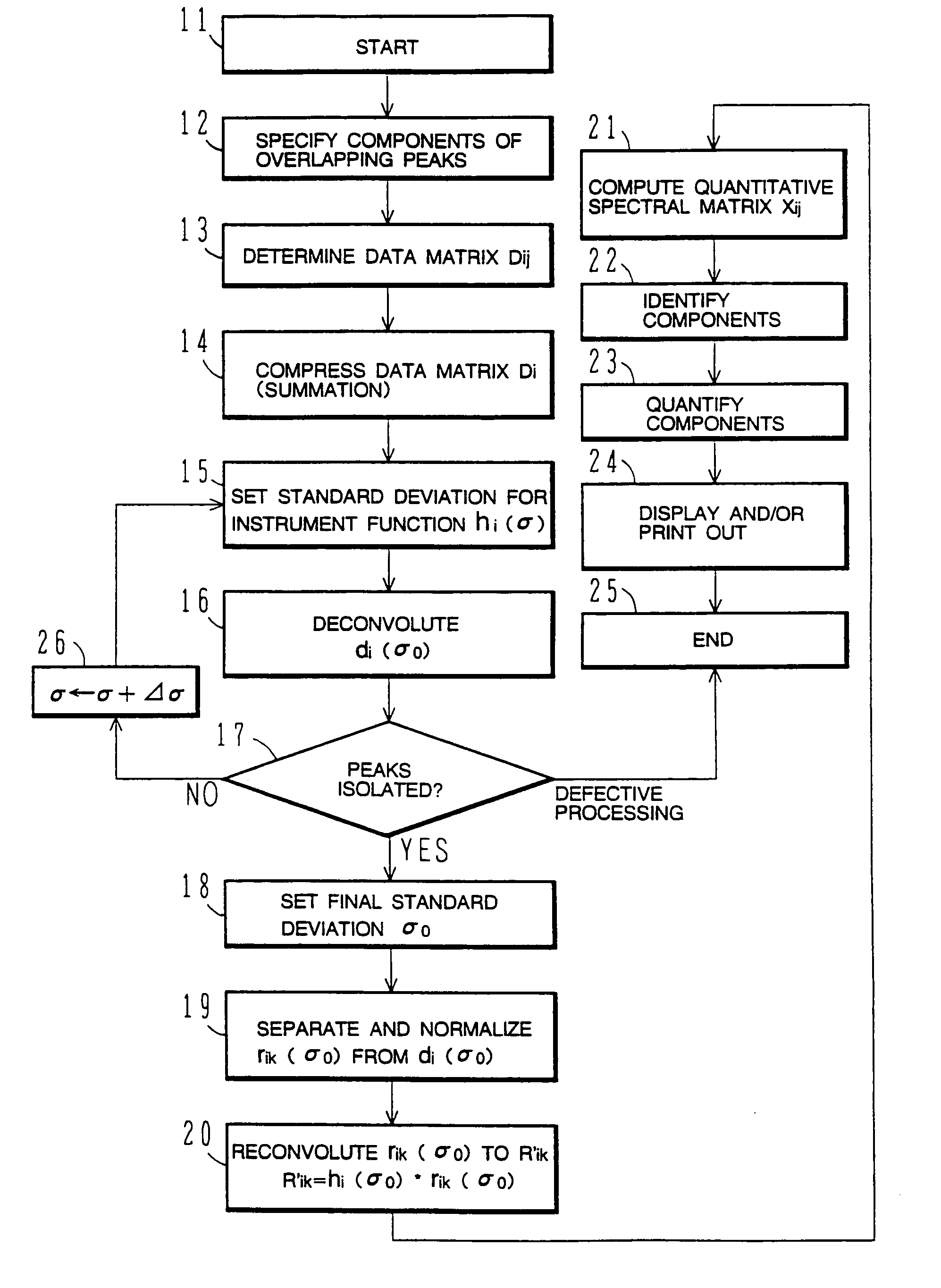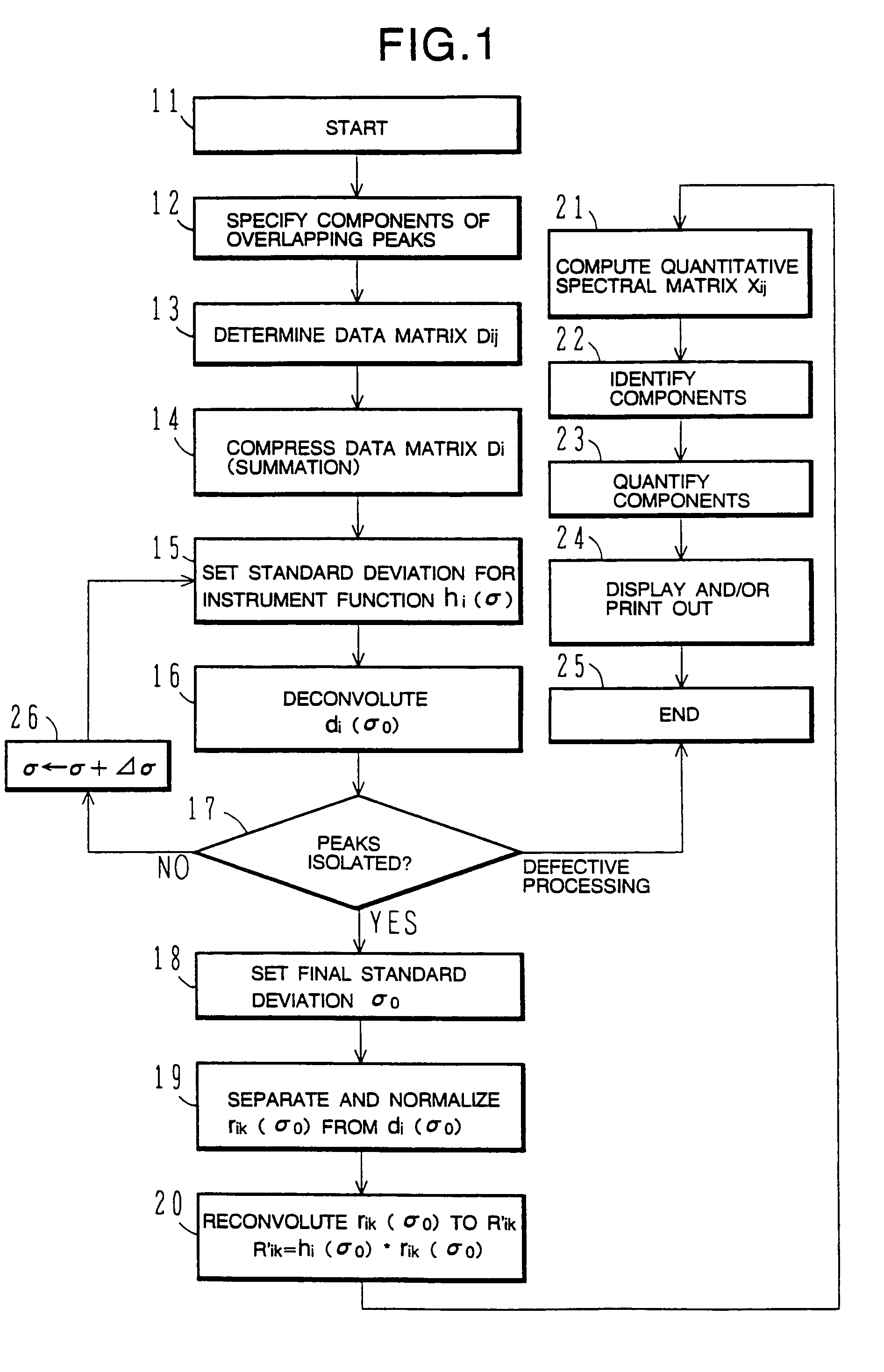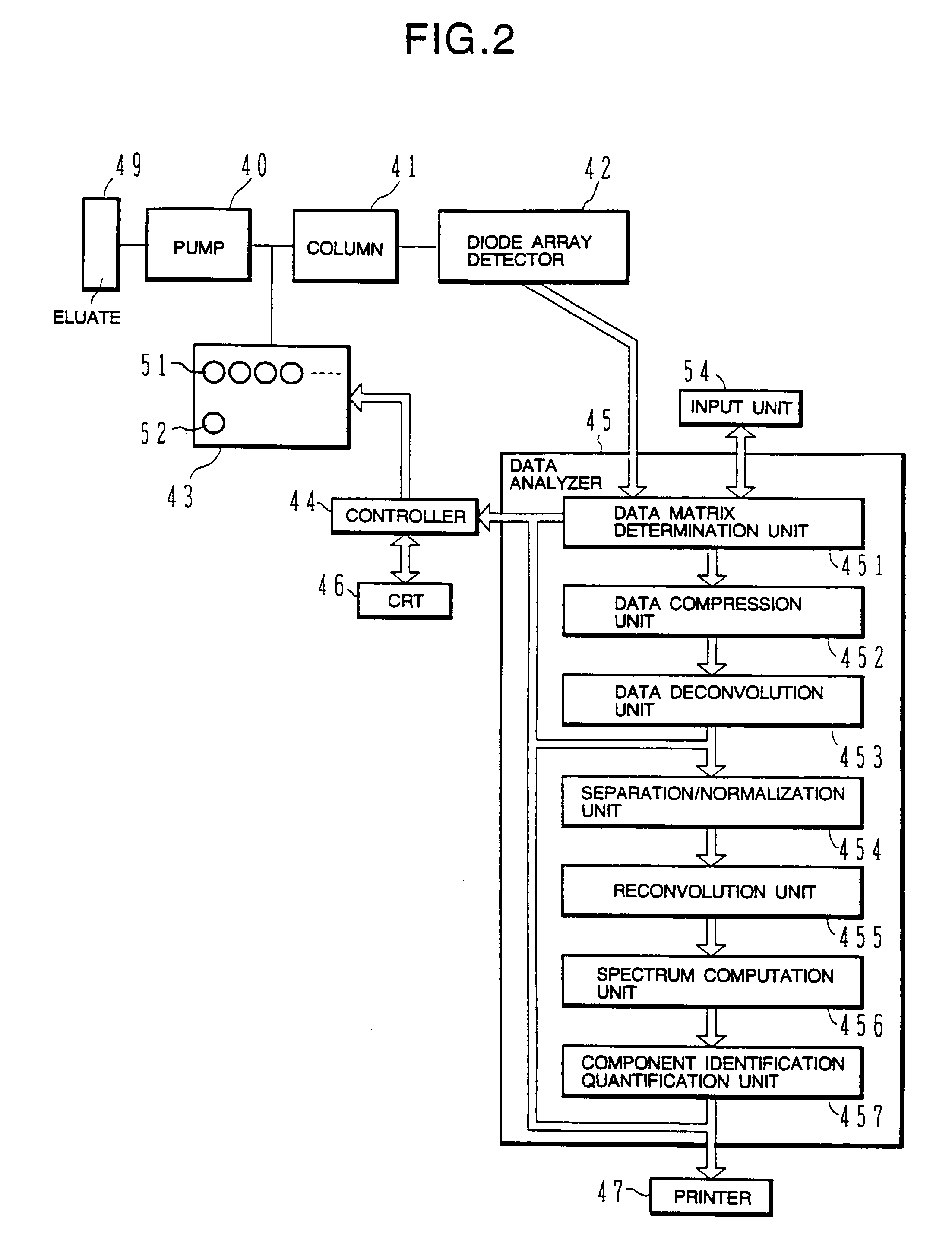Method and apparatus for analyzing multi-channel chromatogram
a multi-channel chromatogram and analysis method technology, applied in the field of chromatographic techniques, can solve the problems of not always giving best-fit to actual peak shapes, unable to say that these methods always reproduce correctly actual peak shapes, and doubting whether an employed model function is appropriate or no
- Summary
- Abstract
- Description
- Claims
- Application Information
AI Technical Summary
Benefits of technology
Problems solved by technology
Method used
Image
Examples
first embodiment
[0122]FIGS. 3–6 show a multichannel chromatogram of the unknown sample 51 resulted from the present invention. Referring first to FIG. 3(A), since components 2 and 3 overlap with each other, it is difficult to not only quantify but also identify them. For this reason, the overlapping peaks must be separated or resolved, a retention time be correctly obtained, and the spectra be accurately defined in order to identify the components. Also, by performing the separation or resolution of the components to accurately obtain the magnitudes of the peaks, a quantitative analysis may be carried out from a comparison with the standard sample 52.
[0123]Next, the procedure of an analyzing method and the operation of the apparatus, according to the first embodiment of the present invention, will be described with further reference to FIGS. 1–6.
[0124]In FIG. 2, multichannel chromatogram data is supplied from the diode array detector 42 to the controller 44 through the data matrix determination uni...
second embodiment
[0167]The processing like the embodiment shown in FIGS. 1 and 2, can be performed without relying on a model function.
[0168]It can be thought from a different point of view that the second embodiment of the present invention supports and extends a conventionally well-known method for obtaining spectra of components from lower portions or bases (less influenced by the overlapping) of overlapping peaks and resolving the peaks with the aid of the deconvolution. The embodiments of the present invention permit the resolution of overlapping peaks including three or more components, which has been difficult to be accomplish with the prior art techniques.
[0169]FIGS. 9A, 9B show an example of a graphical representation of a three-dimensional chromatogram obtained by deconvolution without data compression, for the purpose of comparing the present invention with the prior art techniques. As can be seen from FIGS. 9A, 9B, deconvolution simply performed on a three-dimensional chromatogram will ...
third embodiment
[0209]According to the present invention as described above, a large amount of information provided by a multichannel chromatogram can be utilized to obtain spectra and elution profiles of unknown components. Then, from the obtained spectra and elution profiles, overlapping peaks can be separated or resolved, and component identification and quantification can be accurately accomplished for the components.
[0210]While the third embodiment has been described, by way of example, for a combination of deconvolution and factor analysis, the deconvolution may be combined with any of other multivariate analysis based methods, not limited to the factor analysis.
[0211]Specifically, regression analysis, which is one of such multivariate analysis based methods, may be combined with the deconvolution to improve a method for resolving overlapping peaks in a multichannel chromatogram. The aforementioned conventional non-linear least-squares method has more difficulties in determining a regression ...
PUM
| Property | Measurement | Unit |
|---|---|---|
| θ | aaaaa | aaaaa |
| θ | aaaaa | aaaaa |
| time | aaaaa | aaaaa |
Abstract
Description
Claims
Application Information
 Login to View More
Login to View More - R&D
- Intellectual Property
- Life Sciences
- Materials
- Tech Scout
- Unparalleled Data Quality
- Higher Quality Content
- 60% Fewer Hallucinations
Browse by: Latest US Patents, China's latest patents, Technical Efficacy Thesaurus, Application Domain, Technology Topic, Popular Technical Reports.
© 2025 PatSnap. All rights reserved.Legal|Privacy policy|Modern Slavery Act Transparency Statement|Sitemap|About US| Contact US: help@patsnap.com



